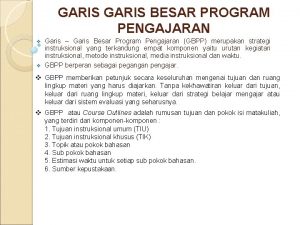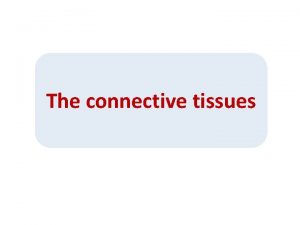Connective Leadership Theory Connective Leadership outlines nine underlying






- Slides: 6

Connective Leadership Theory Connective Leadership outlines nine underlying behavior strategies within three sets of achieving styles that achievers and leaders call upon to achieve their goals.

Three Sets of Achieving Styles • Direct – Confront their tasks individually and directly either by getting satisfaction from mastering a task, outperforming others through competitive actions, and using their power to take charge of everyone and everything. – Most closely linked to diversity and expressions of individualism • Relational – Prefer to work on group tasks or help others obtain their goals by either taking vicarious satisfaction from facilitating and observing accomplishments of others , taking a secondary role in helping others achieve their accomplishments, and working collaboratively on group tasks. – Mentors, teachers, committees • Instrumental – Using political savvy to diminish friction among people or groups with different agendas by emphasizing one’s personal strengths to attract support, creating and working through social networks and alliances, and entrusting various aspects of one’s vision to others. – Individuals as instruments for accomplishing organizational goals

Direct Behavior Strategies Masters of Own Tasks • Intrinsic • • • Self Motivated Look within for standards of excellence Often dissatisfied, even when others satisfied Intellectual and creative freedom through autonomy Accomplishing difficult tasks is the reward in itself • Competitive • Its all about being better than others in performing tasks • If task is non-competitive, they create a competition • Work tirelessly until they succeed • Power • • Need to be in charge of agenda, people, task, events, and resources Feel they can always do better than the current leader They delegate, but do not relinquish responsibility for the task Micromanagers

Relational behavior Strategies Contributes to Other’s Tasks – Collaborative • • Enjoy accomplishing tasks with others Invite others to join in when faced with a tasked Feel devoted to group and its goals Contributes fairly and wants fair rewards and consequences – Contributory • Work behind the scenes to help others achieve their tasks • Satisfaction comes from doing their part well so others are successful • Often volunteer to help others whose goals they respect – Vicarious • Offer support and guidance to others, but do not get directly involved • Success of others is sufficient reward • Mentors

Instrumental Behavior Strategies Maximizes Interactions – Personal • • Rely on themselves; personality, intelligence, wit, humor, charm, etc. Enjoy public speaking and can convince others to help with their task Dramatic gestures at the right time captivate supporters imaginations Highly developed sense of timing – Social • • Involve others whose special skills or experience are relevant to the task Always recognize others and their contributions Strong political and networking skills Network is their database for information and resources – Entrusting • • Make others feel they are counting on them-confidence in others Entrust tasks believing others can do better than themselves Engage leadership through expectation Less concerned than the social leader in selecting the right people

Putting it All Together “No individual style is intrinsically better than any other. Rather, the purpose of the Connective Leadership/Achieving Styles Model is to identify leadership strategies based on Achieving Styles and to call attention to the wide range of behaviors available to all leaders. Those leaders who employ the broadest and most flexible leadership repertoire are most likely to meet the complex challenges of the Connective Era. ” http: //www. achievingstyles. com/asi/connective_leadership. asp











